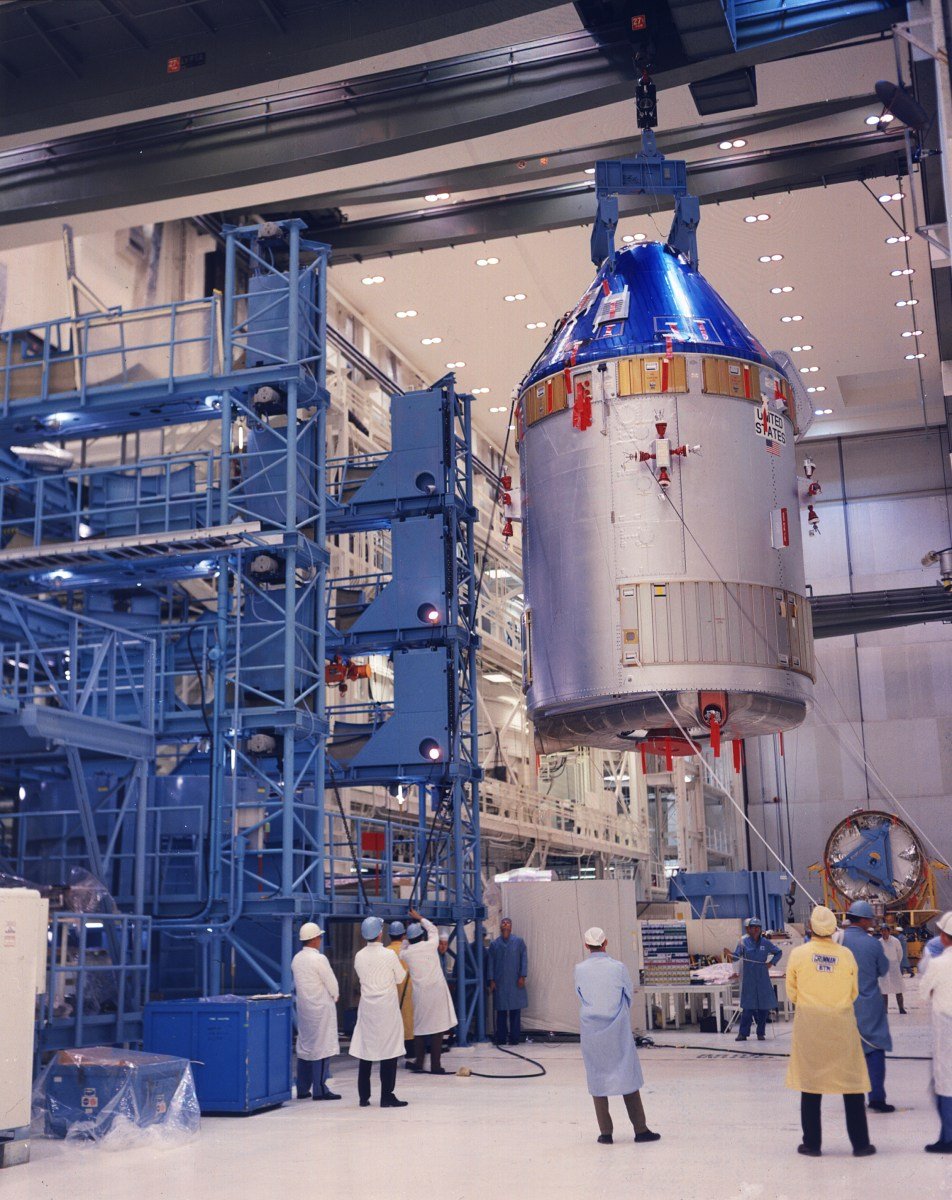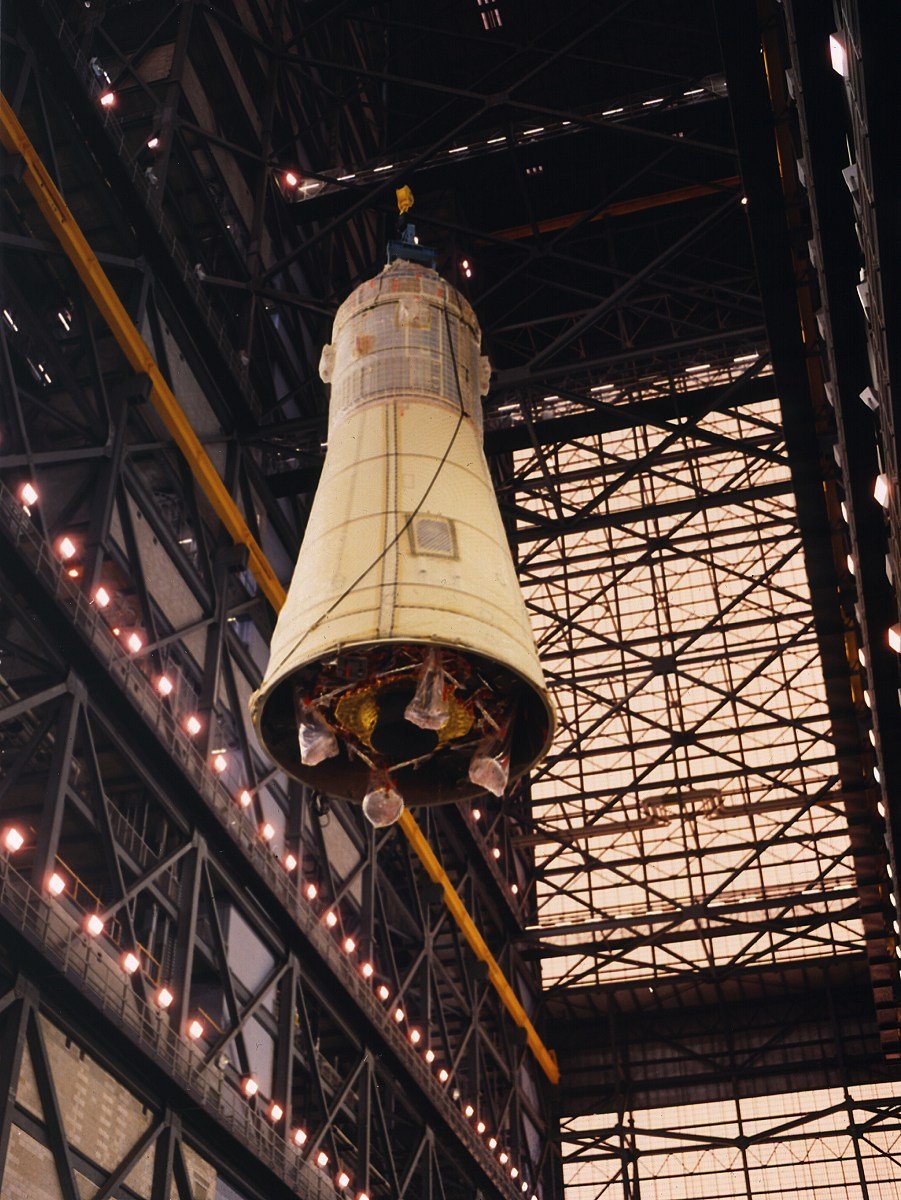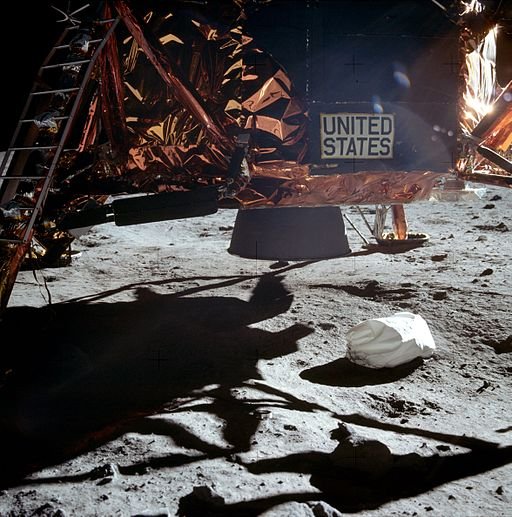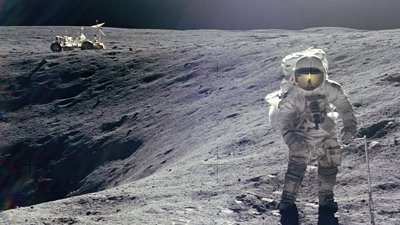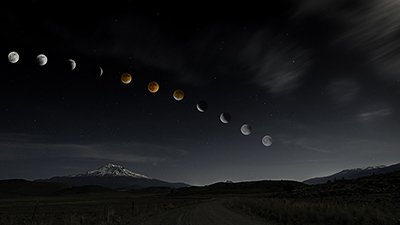Apollo 11: 50 Years Later
A Night to Remember
Today is the golden jubilee of the first manned lunar landing. Fifty years ago this evening, Neil Armstrong stepped out onto the lunar surface and uttered the memorable words, “That’s one small step for [a] man, one giant leap for mankind.” Ironically, that week the dystopian futuristic song “In the Year 2525,” by the one-hit wonder Zager and Evans, was number one on the pop music charts. Despite the popularity of that song, at the time people generally were optimistic about the future, and especially the future of space travel. For instance, many people thought that flights to the moon would be almost routine by the end of the century. Pan American Airways was taking reservations for flights to the moon. By the time Pan Am stopped taking reservations in 1971, nearly 100,000 people had signed up. Pan Am expected that it might make those flights a reality around the year 2000. Obviously, that didn’t happen. In fact, having folded in 1991, Pan Am didn’t even survive to 2000. Perhaps Zager and Evans weren’t entirely off the mark.
Why Go to the Moon?
There were some scientific reasons given for going to the moon, but the primary one was nationalism.
Why did the United States go to the moon 50 years ago? And why hasn’t anyone been back since the last manned mission to the moon in 1972? There were some scientific reasons given for going to the moon, but the primary one was nationalism. The 1950s and 1960s was the height of the Cold War. After the Second World War, both the United States and the Soviet Union began development of rockets to deliver nuclear bombs on the other side of the world. It was obvious that these or similar rockets could be adapted to launching satellites and eventually people into space. The Soviet Union took the first step in this direction by launching an artificial satellite in October 1957. A second successful Soviet satellite launch preceded any American success. And the early Soviet satellites were far larger than the much smaller American satellites. This was a result of the Soviet Union having more powerful rockets. This led to the perception that the Soviets were far ahead of the United States in rocket technology. Senator John Kennedy, seeking reelection, in 1958 played upon this perception by creating the term “missile gap” and vowed to solve this problem. Kennedy also employed this strategy in his 1960 presidential election campaign.
Three months after Kennedy became president in January 1961, Soviet cosmonaut Yuri Gagarin orbited the earth, becoming the first man in space. A month later, Alan Shepherd became the first American in space, but his was a 15-minute suborbital flight. It would be nearly a year before an American would orbit the earth. It looked like the United States was far behind the Soviet Union in what was soon called “the space race.” But the space race seemed to lack a specific goal. Therefore, on May 25, 1961, President Kennedy, speaking before a joint session of Congress, said,
I believe that this nation should commit itself to achieving the goal, before this decade is out, of landing a man on the moon and returning him safely to the earth.
This was a bold initiative, one that would cost a tremendous amount of money. While the public was not that thrilled with this proposal, politicians and opinion-makers largely were enthusiastic. Many of them thought this was just the sort of thing needed to demonstrate the superiority of the values of the West as opposed to the oppression of Communism.
Developing the Way There
Ultimately, the 1960s would see the development of three distinct U.S. manned space programs.
However, at the time, both sides were struggling to develop the technology and procedures just to put men into space and return them safely to earth. How would one go about planning for a safe trip to the moon and back? That required a tremendous amount of planning and design. Many steps lay in between. Ultimately, the 1960s would see the development of three distinct U.S. manned space programs. The first, the Mercury program, had begun in the late 1950s. The Mercury program called for developing the rockets and space capsules that would place Americans in space. The Mercury 7, as the first batch of seven astronauts chosen for the Mercury program came to be called, had been selected in 1959. There were six Mercury flights between May 1961 and May 1963 (Deke Slayton, one of the original 7, didn’t fly because of an erratic heart rhythm). The final Mercury flight orbited the earth 22 times over nearly a day and a half. The Mercury program helped develop the hardware and methods to keep astronauts alive and well, accommodating to normally simple tasks, such as drinking, eating, sleeping, and eliminating body wastes—all in zero gravity.
The Mercury program was followed by the Gemini program. The name Gemini was selected because its flights had two astronauts, and Gemini is Latin for “twins” (the constellation by the same name is a set of twins). Of course, the Gemini space capsule had to be larger than the Mercury space capsule to fit two astronauts. There were ten Gemini flights between May 1965 and November 1966. Three of the original seven astronauts were joined by eight astronauts chosen in Astronaut Group 2 in 1962 and five of 14 astronauts in Astronaut group 3 selected in 1963. The Gemini program had several purposes. One purpose was to extend the length of time that astronauts were in space. It was already determined that a round trip to the moon would require at least eight days, so it was important to establish the feasibility of such a long duration in space. The longest Gemini flight, Gemini 7, spent two weeks in space. A second purpose of the Gemini program was to develop the ability of spacecraft to dock with one another in space. This required the design and construction of a docking mechanism, the small thruster rockets to maneuver the spacecraft, as well as demonstrating in space that this could be done. The Gemini 11 mission even boosted to a high orbit using the rocket on the Agena target vehicle that it docked with. The height achieved by the Gemini 11 remains the record altitude for a manned orbit of the earth. A third purpose was to develop techniques of doing space walks, exiting the spacecraft to do work outside. The technical term for this is EVA, for Extravehicular Activity. EVAs required the development of airlocks, hatches, spacesuits, and tethering devices, as well as the techniques to do this. Both docking and EVAs would be essential in going to the moon.
Project Apollo
The three Apollo modules were far larger and more massive than the much smaller Mercury and Gemini spacecraft, so they required larger, more powerful rockets to place into orbit.
By far, the most extensive space program of the 1960s was the Apollo program, the project that would take astronauts to the moon. The Apollo program required designing a vehicle for landing on the moon and taking off once again. This vehicle became known as the LEM, for Lunar Excursion Module. It consisted of a very cramped crew cabin for two astronauts while on the moon for at most 2–3 days, a landing platform with four legs, a descent engine under the platform to allow for landing on the moon, and an ascent engine under the crew compartment to take off from the moon. The descent engine and landing platform remained on the moon, with only the crew cabin and ascent engine leaving the lunar surface at the completion of the mission on the moon. For most of the missions to the moon and back to earth, the crew would remain in the CM, or Command module. While two astronauts descended to the lunar surface, a third crew member remained aboard the CM orbiting the moon. The CM contained the controls for much of the mission, as well as food, water, and other provisions necessary for the three-man crew over most of the eight days or more that the missions required. External and lying below the CM was the SM, or service module. The SM contained the power for the CM, as well as a rocket engine and its fuel. The three modules were launched into orbit around the earth, with the CM on top, the SM underneath, and the LEM contained in a shroud under the SM. Once in orbit, and all systems were checked out, the third stage of the launching rocket was fired to send all three modules to the moon. Once underway, the third stage and the shroud around the LEM were jettisoned, and the astronauts spun the CM and SM around so that a hatch on the top of the CM could mate to a hatch on the top of the LEM. As the three modules passed behind the moon, the SM rocket fired to slow the craft down to enter lunar orbit. Soon, the LEM with its two occupants separated from the CM and descended to the moon. Upon return from the lunar surface, the LEM once again docked with the CM, whereupon the astronauts would transfer themselves and samples taken from the lunar surface to the CM. When finished, the LEM usually was jettisoned and crash-landed onto the moon by remote control. This was to calibrate seismographs left on the lunar surface. Finally, the SM engine was fired one more time to take the CM back to the earth. Shortly before arriving on the earth, the CM separated from the SM, and the CM made a safe landing back on earth (the SM burned up during reentry).
The three Apollo modules were far larger and more massive than the much smaller Mercury and Gemini spacecraft, so they required larger, more powerful rockets to place into orbit. The first manned Apollo mission, the Apollo 7 in October 1968, used the Saturn 1B rocket. This two-stage rocket could place the CM and SM into orbit around the earth. The LEM was still under development, so the purpose of the ten-day Apollo 7 mission was to test the CM and SM in space. This was the only manned Apollo mission that used the Saturn 1B. All subsequent Apollo missions used the larger Saturn V. The Saturn V had three stages. The first stage had five engines. When fully fueled, the first stage weighed 2,500 tons. The second stage also had five engines, though they were smaller than the first-stage engines. The total weight of the second stage was only 500 tons. The first two stages placed the third stage and the three modules above the earth’s atmosphere. The third stage’s single engine then put the spacecraft into orbit around the earth. To launch the Apollo spacecraft to the moon required a second burn of the third-stage engine. The fully fueled third stage weighed 130 tons. All three stages with the three modules atop were more than 360 feet tall.
The Pre-Apollo 11 Missions
I must mention Apollo 1, which was intended as the first manned Apollo mission, scheduled for lift-off in February 1967. A few weeks before the launch date, a fire broke out inside the capsule during a launch rehearsal. The fire rapidly spread, quickly killing all three astronauts aboard. This resulted in the cancelation of Apollo 1 and the grounding of all future missions until an investigation could be completed. The investigation called for many changes in the design of the CM and the astronauts’ suits. Implementation of these changes delayed the first manned Apollo launch (Apollo 7) by more than a year and a half. The testing of the CM and SM during the Apollo 7 mission was a complete success, giving confidence in the Apollo concept and its required redesign.
The Apollo 8 mission in late December 1968 was historic in that the astronauts orbited the moon. This was the first time that astronauts had loosed the bonds of the earth’s gravity and orbited another body. The LEM still was under development, so it did not fly on the Apollo 8. The purposes of the mission were to further test the CM and SM, to prove the use of the two required burns of the Saturn V third-stage engine, and to test the two major burns of the SM engine. The most memorable event of the mission was the Christmas Eve live broadcast in which the astronauts read the first ten verses of Genesis 1. It was the most-watched television broadcast in history up to that time.
The Apollo 9 mission orbited the earth for ten days in March 1969. It was the first time that the LEM flew. The LEM was tested extensively in this mission. One test was to use the descent engine of the LEM to move three connected modules. This was done to test the feasibility of using the LEM’s engine in case of a failure of the SM engine. As it turned out, this possibility became an urgent reality two years later when there was a catastrophic loss of the SM during the Apollo 13 mission. In another test, an astronaut exited the LEM and did an EVA and entered the CM. This test served two purposes, to test the use of the life support system that would be used during EVAs on the moon, and to test the feasibility of such a moonwalk in the case of an emergency. Another test was to separate the LEM from the CM, move some distance away, and then return and redock. All this would be necessary on lunar landing missions. The LEM performed very well.
The dress rehearsal for the lunar landing was the Apollo 10 in May 1969. The three astronauts with the full Apollo spacecraft orbited the moon for the first time. Two astronauts in the LEM separated from the CM and flew to within ten miles of the lunar surface. They jettisoned the descent stage and used the ascent engine to redock with the CM, as would happen in future moon landing missions.
Apollo 11
The success of the Apollo 7, 8, 9, and 10 gave renewed confidence in the Apollo spacecraft and set the stage for the momentous occasion in July 1969.
The success of the Apollo 7, 8, 9, and 10 gave renewed confidence in the Apollo spacecraft and set the stage for the momentous occasion in July 1969. The Apollo 11 launched on July 16, 1969, and reached lunar orbit on July 19. The following day, Neil Armstrong and Buzz Aldrin entered the LEM and separated from the CM, leaving Michael Collins alone in the CM. The two astronauts soon landed on the moon, and they ventured out onto the lunar surface a few hours later. That was a very memorable live television broadcast. It didn’t matter that the images weren’t that good (there is a story there in itself)—it was the first man on the moon! The next day, the two astronauts left the lunar surface and rejoined Collins in the CM and returned to earth. Upon their arrival, the Apollo 11 crew were whisked into quarantine, just in case by some remote chance they had picked up a pathogen on the moon. After the astronauts left quarantine, they received a hero’s welcome wherever they went. Sadly, Neil Armstrong, the first man on the moon, died in 2012. But the other two Apollo 11 astronauts, Buzz Aldrin and Michael Collins, remain alive.
Why We Haven’t Returned to the Moon
As I previously stated, opinion makers and politicians generally were supportive of the goal of landing on the moon. The support among the public wasn’t quite as strong, and soon after the first lunar landing, that public support began to wane. At its peak, the manned space program was gobbling up 3% of the national budget. People questioned whether, with so many other pressing needs on earth, why we needed to keep going back to the moon. The final Apollo mission, Apollo 17, went to the moon in December 1972. Amidst declining popularity, Apollo 18 and 19, the last two planned moon missions, were canceled. Realistically, the moon offers no resources that can’t be found on earth, so repeatedly going to the moon seems pointless.
Even before completion of the Apollo program, NASA was working on other missions, first Skylab in the early-mid-1970s, and then the development of the Space Shuttle. NASA eventually constructed five operational shuttles, and they flew missions 1981–2011. During that time, the emphasis shifted to constructing and maintaining the International Space Station (ISS). NASA now struggles with designing and building a replacement spacecraft to send astronauts to the ISS (astronauts currently are ferried via Russian capsules). For several years NASA and politicians, such as several presidents, have tried to get the public behind a program to return astronauts to the moon, but the public isn’t that interested. Both the Cold War and the 1960s are over, and there just isn’t much enthusiasm for going back to the moon. The 1975 good-will Apollo-Soyuz mission is credited with helping ease Cold War tensions. The flight featured the docking of a Soviet spacecraft with a capsule left over from the Apollo program (this was the only spaceflight that the original-7 astronaut Deke Slayton made). Since then, the United States and Russia have regularly worked together in running the ISS.
Conclusion
In the 1960s, going to the moon was all about the achievement—it was worth going to the moon because it was there! Somehow, a return just doesn’t have the same pizzazz.
Do Christians, and especially creationists, have strong opinions about a return to the moon? It’s difficult to say. In the 1960s, going to the moon was all about the achievement—it was worth going to the moon because it was there! Somehow, a return just doesn’t have the same pizzazz. As was true in the 1960s, there are still good scientific reasons for going to the moon. But robotic spacecraft have proved their mettle exploring Mars, and it’s likely that robotic spacecraft can do about anything that astronauts could do on the moon but much cheaper and without potential tragedy.
NASA has changed over the past half-century. There was much can-do attitude at NASA back then, but now NASA seems steeped in far more bureaucracy. It’s been eight years since the last Space Shuttle flew, and yet, NASA has no capability of launching astronauts. It was eight years between President Kennedy’s challenge that the United States go to the moon and the realization of that goal. And the design and engineering challenges then were far greater than a simple return of astronauts to space. This fact speaks volumes about how much the culture of NASA has changed.
But there has been another, perhaps deeper shift in NASA. Back in the 1960s, it was about real science: the experimental and observational exploration of the natural world and the application to spaceflight. However, NASA increasingly has gotten into origins science, the question of how and when things came to be. As to be expected, NASA’s emphasis has been evolutionary, something that we at Answers in Genesis would disagree with. But when NASA pursues true science of how the world now exists, we are supportive for the most part. There may be much about the moon that we don’t yet know which could support recent creation rather than billions of years of evolution.

Answers in Genesis is an apologetics ministry, dedicated to helping Christians defend their faith and proclaim the good news of Jesus Christ.
- Customer Service 800.778.3390
- Available Monday–Friday | 9 AM–5 PM ET
- © 2025 Answers in Genesis


